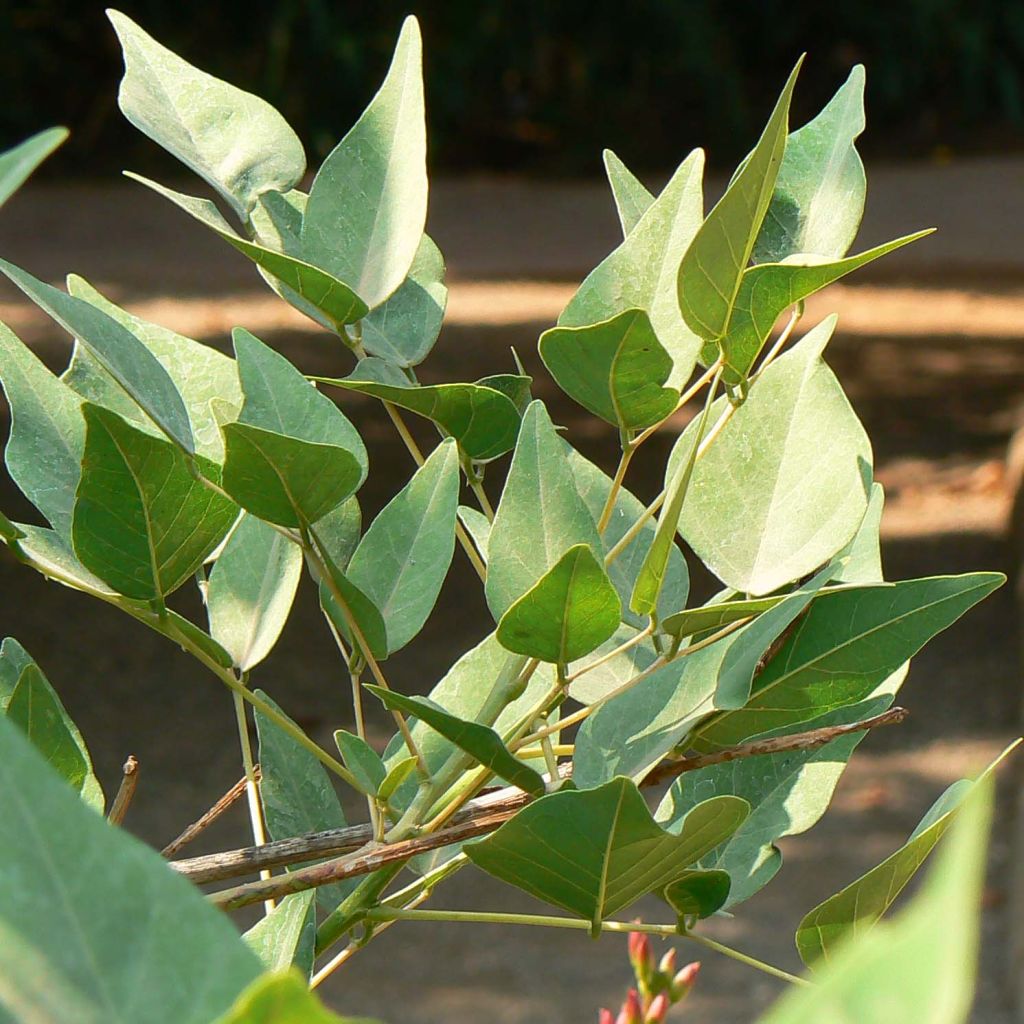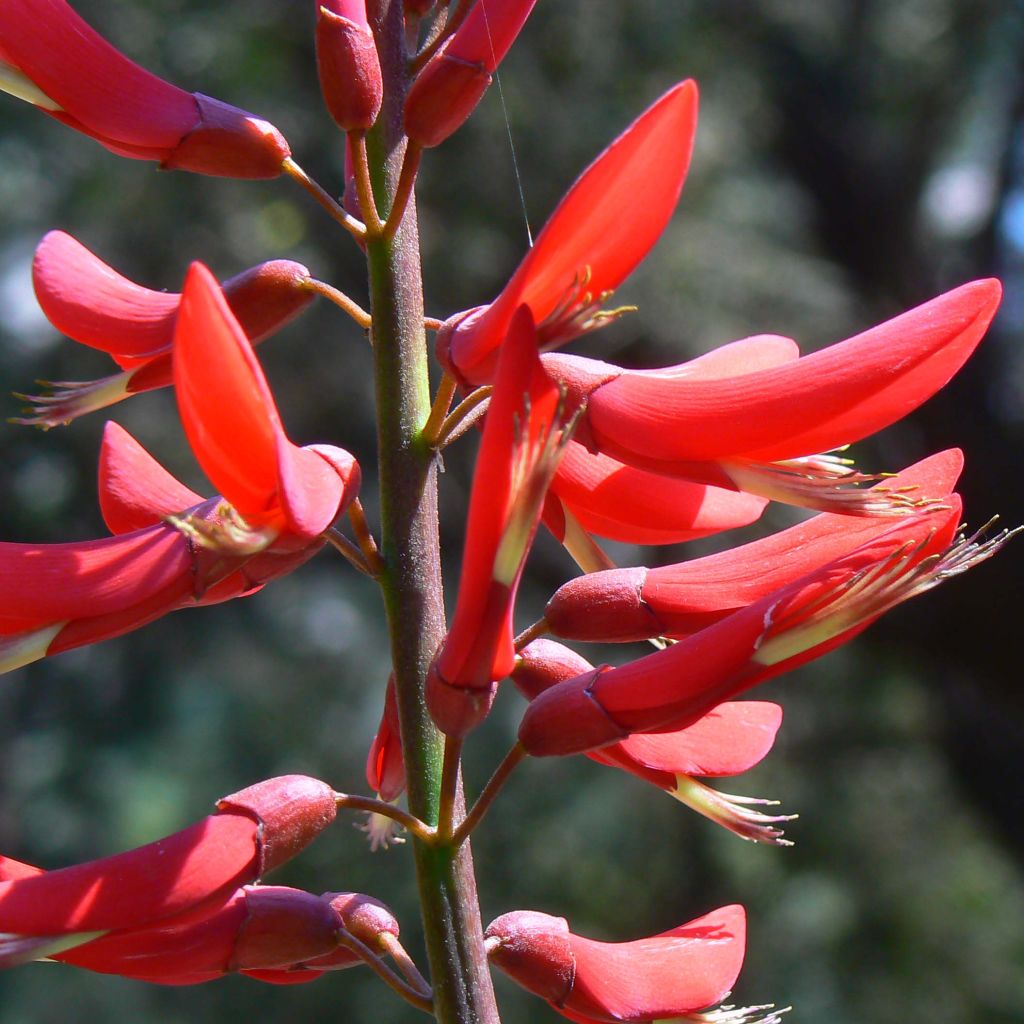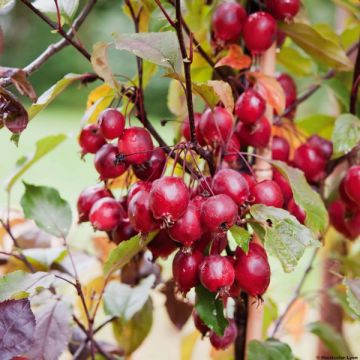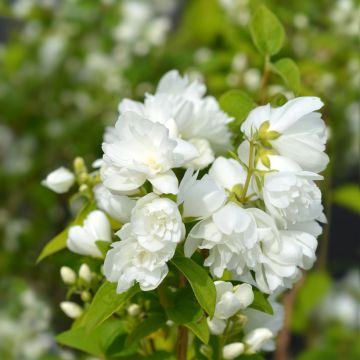

Erythrina x bidwillii - Coral Tree


Erythrina x bidwillii - Coral Tree


Erythrina x Bidwilli - Erythrine rouge


Erythrina x Bidwilli - Erythrine rouge


Erythrina x Bidwilli - Erythrine rouge


Erythrina x Bidwilli - Erythrine rouge
Erythrina x bidwillii - Coral Tree
Erythrina x bidwillii
Coral Tree, Camarillo Coral Tree
The quality is no longer there!! Not used to feeble young plants at Promesses de Fleurs, only one stem and not in good condition. I hope it will survive. Very disappointed.
Michèle, 11/03/2023
Special offer!
Receive a €20 voucher for any order over €90 (excluding delivery costs, credit notes, and plastic-free options)!
1- Add your favorite plants to your cart.
2- Once you have reached €90, confirm your order (you can even choose the delivery date!).
3- As soon as your order is shipped, you will receive an email containing your voucher code, valid for 3 months (90 days).
Your voucher is unique and can only be used once, for any order with a minimum value of €20, excluding delivery costs.
Can be combined with other current offers, non-divisible and non-refundable.
Home or relay delivery (depending on size and destination)
Schedule delivery date,
and select date in basket
This plant carries a 24 months recovery warranty
More information
We guarantee the quality of our plants for a full growing cycle, and will replace at our expense any plant that fails to recover under normal climatic and planting conditions.
Would this plant suit my garden?
Set up your Plantfit profile →
Description
Erythrina x Bidwillii, also known as Red Coral Tree or Bidwell's Coral Tree, is a beautiful exotic bush that is grown more as a perennial plant. Its growth is so rapid that it regenerates its branches and blooms in the next season after being cut back to the ground by frost. It is appreciated for its spectacular and exuberant flowering, in the form of huge clusters of long red tubular flowers, often exceeding 70 cm (27.6 in) in length. It can be grown in the ground, in perfectly drained soil, provided it is well protected during winter. In colder regions, it makes a very beautiful orangery plant.
Erythrina x bidwillii is a horticultural hybrid resulting from the cross-breeding of Erythrina herbacea, native to the southeastern U.S.A and Mexico, and E. crista-galli, native to South America. Its first parent is a semi-herbaceous perennial plant with woody base, hardy and very drought-resistant. The second, which forms a small tree or large bush, is a species that prefers wet areas. Erythrina belongs to the family Fabaceae. It is grown in temperate climates as an herbaceous plant in the ground, or in a greenhouse. Its habit is a bit disorderly, weeping and often wider than tall.
Bidwell's Coral Tree will reach 2 to 3m (6 ft 7 in to 9 ft 10 in) in all directions, slightly less if pruned back each year by frost or if grown in a pot. It produces long, slender and slightly spiny shoots. The leaves are deciduous in winter in our latitudes and divided into 3 large heart-shaped leaflets, of a pretty apple green. Flowering occurs more or less early depending on the climate and mode of cultivation. It starts in late spring in mild climates, from summer to autumn if the plant has regenerated its branches in spring. At the tip but also along this year's branches, clusters sometimes reaching 1m (3 ft 4 in) in length form, composed of very elongated, almost tubular, pea flowers, 5 to 7cm (2 to 2.8 in) long, with a large bright red standard directed downwards. This flowering is rich in nectar and attracts many pollinating insects. As in most Fabaceae, this plant has a powerful taproot with nodules that house bacteria capable of fixing nitrogen from the air, which is an adaptation to poor soils.
A spectacular bush or large perennial, with a somewhat scruffy but undeniably exotic appearance, Erythrina can sometimes be difficult to combine in the garden, but it truly is a star plant for the terrace. In the ground, one could match the "cosmetic" red of its clusters with the white flowers of a buddleia, gauras or deutzia. It could also be planted next to Sophora secundiflora, a curious Texan bush from the Fabaceae family that produces blue clusters. Red Erythrina is undemanding of the nature of the soil if drainage is good: it tolerates poor and sandy soil. In continental climates, it is not difficult to grow in a large pot to be stored frost-free during the winter.
Report an error about the product description
Erythrina x bidwillii - Coral Tree in pictures






Plant habit
Flowering
Foliage
Botanical data
Erythrina
x bidwillii
Fabaceae (Papilionacea)
Coral Tree, Camarillo Coral Tree
Cultivar or hybrid
Planting and care
Erythrina x Bidwilli is best planted in spring, after the frost, in open ground in coastal regions with mild winters in a well-protected location. Choose a sunny spot, sheltered from cold winds. Plant it in very well-drained soil which is the key to its hardiness. Add coarse sand or gravel and compost to the soil in your garden, as it dislikes waterlogged soil that causes its roots to rot. Under these conditions, its hardiness is around -10°C (14 °F), when the crown is covered with a thick layer of mulch 30 cm (11.8 in) deep. In November, except in regions where there is no frost, prune the stems to 10 cm (3.9 in) from the ground before spreading the mulch. Regularly remove faded flowers to extend the flowering period.
Pot cultivation: choose a large container with drainage holes. Place a layer of gravel or clay balls at the bottom of the pot. Compose a mixture containing 1/3 garden soil, 1/3 compost, and 1/3 coarse sand. Monitor watering in summer. Only apply fertilizer if the plant blooms poorly. Bring the plant indoors to a bright and lightly heated veranda or a cold greenhouse from October onwards.
Planting period
Intended location
Care
-
, onOrder confirmed
Reply from on Promesse de fleurs
Similar products
Haven't found what you were looking for?
Hardiness is the lowest winter temperature a plant can endure without suffering serious damage or even dying. However, hardiness is affected by location (a sheltered area, such as a patio), protection (winter cover) and soil type (hardiness is improved by well-drained soil).

Photo Sharing Terms & Conditions
In order to encourage gardeners to interact and share their experiences, Promesse de fleurs offers various media enabling content to be uploaded onto its Site - in particular via the ‘Photo sharing’ module.
The User agrees to refrain from:
- Posting any content that is illegal, prejudicial, insulting, racist, inciteful to hatred, revisionist, contrary to public decency, that infringes on privacy or on the privacy rights of third parties, in particular the publicity rights of persons and goods, intellectual property rights, or the right to privacy.
- Submitting content on behalf of a third party;
- Impersonate the identity of a third party and/or publish any personal information about a third party;
In general, the User undertakes to refrain from any unethical behaviour.
All Content (in particular text, comments, files, images, photos, videos, creative works, etc.), which may be subject to property or intellectual property rights, image or other private rights, shall remain the property of the User, subject to the limited rights granted by the terms of the licence granted by Promesse de fleurs as stated below. Users are at liberty to publish or not to publish such Content on the Site, notably via the ‘Photo Sharing’ facility, and accept that this Content shall be made public and freely accessible, notably on the Internet.
Users further acknowledge, undertake to have ,and guarantee that they hold all necessary rights and permissions to publish such material on the Site, in particular with regard to the legislation in force pertaining to any privacy, property, intellectual property, image, or contractual rights, or rights of any other nature. By publishing such Content on the Site, Users acknowledge accepting full liability as publishers of the Content within the meaning of the law, and grant Promesse de fleurs, free of charge, an inclusive, worldwide licence for the said Content for the entire duration of its publication, including all reproduction, representation, up/downloading, displaying, performing, transmission, and storage rights.
Users also grant permission for their name to be linked to the Content and accept that this link may not always be made available.
By engaging in posting material, Users consent to their Content becoming automatically accessible on the Internet, in particular on other sites and/or blogs and/or web pages of the Promesse de fleurs site, including in particular social pages and the Promesse de fleurs catalogue.
Users may secure the removal of entrusted content free of charge by issuing a simple request via our contact form.
The flowering period indicated on our website applies to countries and regions located in USDA zone 8 (France, the United Kingdom, Ireland, the Netherlands, etc.)
It will vary according to where you live:
- In zones 9 to 10 (Italy, Spain, Greece, etc.), flowering will occur about 2 to 4 weeks earlier.
- In zones 6 to 7 (Germany, Poland, Slovenia, and lower mountainous regions), flowering will be delayed by 2 to 3 weeks.
- In zone 5 (Central Europe, Scandinavia), blooming will be delayed by 3 to 5 weeks.
In temperate climates, pruning of spring-flowering shrubs (forsythia, spireas, etc.) should be done just after flowering.
Pruning of summer-flowering shrubs (Indian Lilac, Perovskia, etc.) can be done in winter or spring.
In cold regions as well as with frost-sensitive plants, avoid pruning too early when severe frosts may still occur.
The planting period indicated on our website applies to countries and regions located in USDA zone 8 (France, United Kingdom, Ireland, Netherlands).
It will vary according to where you live:
- In Mediterranean zones (Marseille, Madrid, Milan, etc.), autumn and winter are the best planting periods.
- In continental zones (Strasbourg, Munich, Vienna, etc.), delay planting by 2 to 3 weeks in spring and bring it forward by 2 to 4 weeks in autumn.
- In mountainous regions (the Alps, Pyrenees, Carpathians, etc.), it is best to plant in late spring (May-June) or late summer (August-September).
The harvesting period indicated on our website applies to countries and regions in USDA zone 8 (France, England, Ireland, the Netherlands).
In colder areas (Scandinavia, Poland, Austria...) fruit and vegetable harvests are likely to be delayed by 3-4 weeks.
In warmer areas (Italy, Spain, Greece, etc.), harvesting will probably take place earlier, depending on weather conditions.
The sowing periods indicated on our website apply to countries and regions within USDA Zone 8 (France, UK, Ireland, Netherlands).
In colder areas (Scandinavia, Poland, Austria...), delay any outdoor sowing by 3-4 weeks, or sow under glass.
In warmer climes (Italy, Spain, Greece, etc.), bring outdoor sowing forward by a few weeks.








































